
Table of Contents
Youth football is a one of the most popular sports in the US for kids and adolescents. In 2021, Americans playing tackle football increased for the first time since 2010, with around 5.23 million people above the age of 6 participating in the sport that year.
If you’re managing a youth football team, creating a website is helpful for many reasons. It helps attract new players and sponsors, makes online registration and payment processing easy, and fosters a sense of community amongst supporters and players.
But how do you make a good youth football team website? Learn step by step how to build one below.
1. Find a sports website builder
When building a youth football website, the right sports website builder ensures your site will look professional. It also guarantees you can cater to the specific needs of your team and its fans.
Website builders for sports teams have features like schedules, domain names, player profiles, and game results. They usually offer templates and design elements that make your website more attractive to sports enthusiasts.
Jersey Watch offers a free website builder that's great for team management and communication. It also has features like registration tools and background checks, ideal for youth sports admins.
Here’s an example of a flag football website built with Jersey Watch.
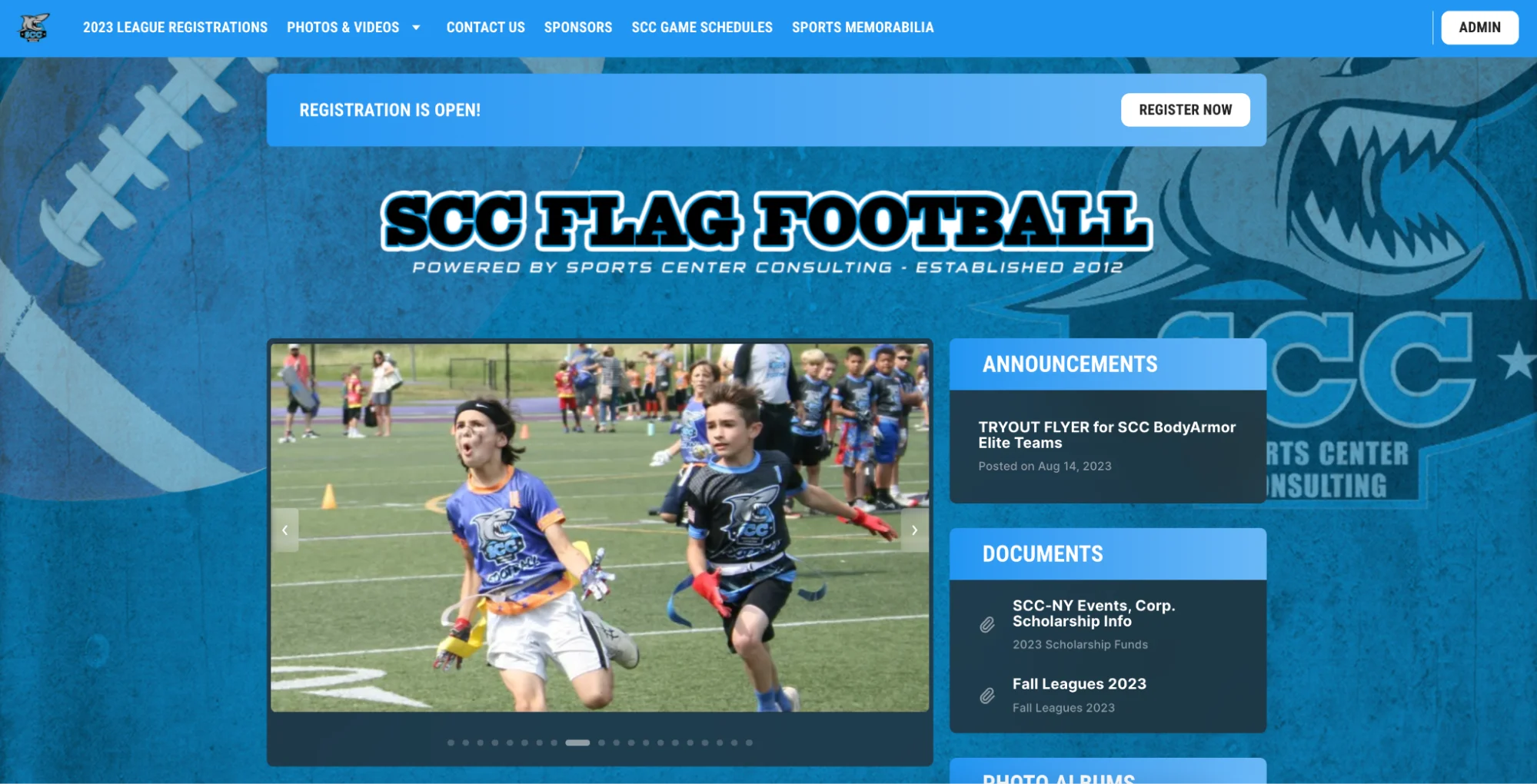
With Jersey Watch’s website builder, you can customize various aspects of your site:
- Team logo and branding
- Color schemes
- Website header and tagline
- Sponsor recognition
- Event schedules
- Staff profiles
…and more!
2. Discuss the purpose of your website
Gather coaches, parent volunteers, and league admins to clearly define your website goals. Is it for scheduling upcoming games, sharing results, promoting events, providing training resources, or facilitating communication amongst everyone?
A clear vision will guide website creation. Give stakeholders a chance to offer feedback. This could be about the proposed features, design, or any additional functionality they think would be helpful.
3. Plan your website content
Creating a youth football website requires thoughtful planning. Your goal is to provide information on teams, schedules, training, and resources. Plus, create a sense of community and support for youth football.
How can you make that happen? Here are some popular categories for youth sports websites:
Organization information:
- Logo and other branding
- Contact information for board members and other important volunteers
- Mission statement and history
- Field and facility locations
- Current sponsors
- Social media accounts
Player registration information:
- Dates of registration
- Prices
- Age requirements
- Tryout information, if applicable
- Fundraising requirements
- Sports waivers, codes of conduct, and any other required acknowledgments
Coach and volunteer information:
- Time requirements
- How to register
- Necessary certifications
- Background check policy
💡Pro Tip: Take a look at other youth football websites around you to see what works and what could be improved. This will inform your own website and ensure it works best for your team.
4. Customize your website design
With Jersey Watch, you don't even need to build a website from scratch. Just login and start editing your basketball website template.
Make your website visually appealing by changing the color scheme to match the colors of your team or league. Add your logo, fonts, and any other web design elements you desire.
For example, the Columbia Knights organization customizes many design elements on its site. Notice the brand's iconic purple color scheme and photos showing different tackle and flag football memories. It also promotes its cheerleading team on the same site.
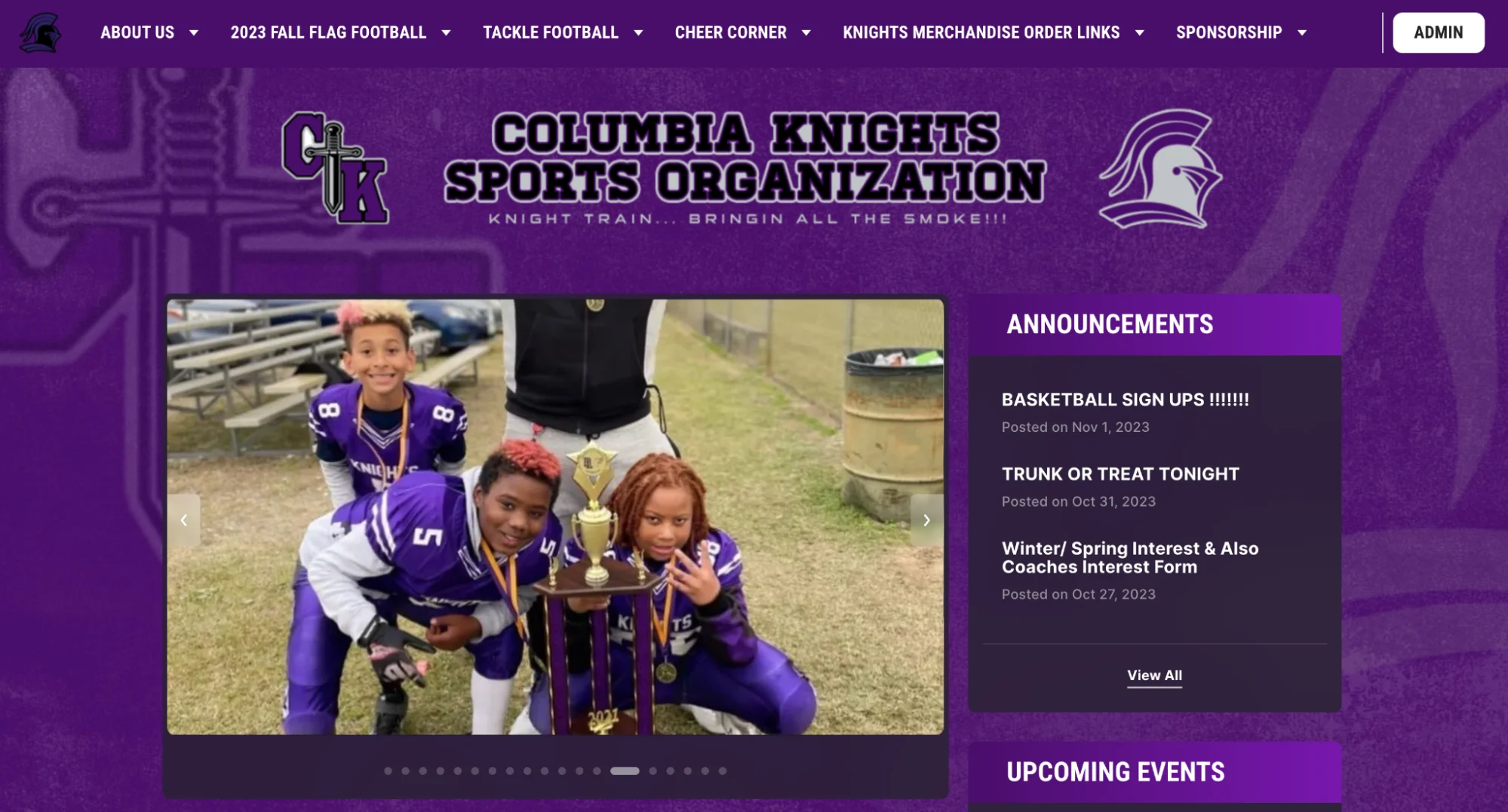
You can drag and drop website sections, such as "announcements" or "upcoming events", around your homepage to create a personalized look and feel for your organization. You can even create new modules to make it truly yours.
Learn more about our new sports website builder here.
5. Add your website content
Now, let’s explore the webpages to include on your youth football website to make it shine. Tailor and adjust these to your team or league, and remember to add any extra pages you need.
Homepage
This is the first impression of your website, so make it welcoming and informative. Include a brief overview of the league, eye-catching images or videos of past games, and clear navigation to other pages.
Piqua Youth Football Association, for example, has a great homepage fit with its branding and announcements. It also gives visitors the option to explore other pages from the navigation bar, like registration, about the league, information for parents, and apparel.
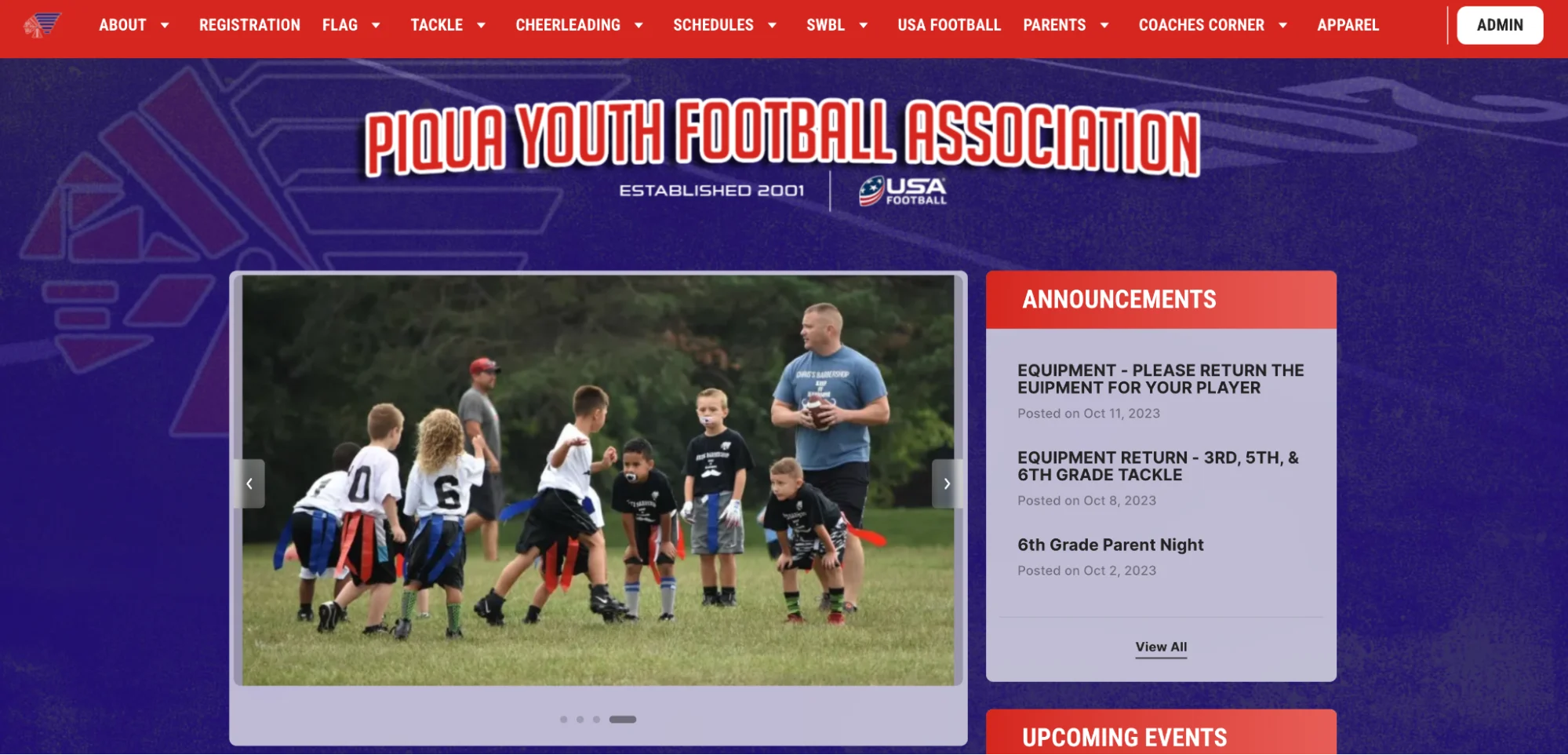
About page
Use this space to share the mission, history, and values of your youth football league. Highlight key staff members or coaches and include photos or brief bios to make a personal connection with visitors.
Piqua Youth Football has different options when you click the About tab. You can learn about the coaching staff, board members, background checks, or read the organization’s mission statement.
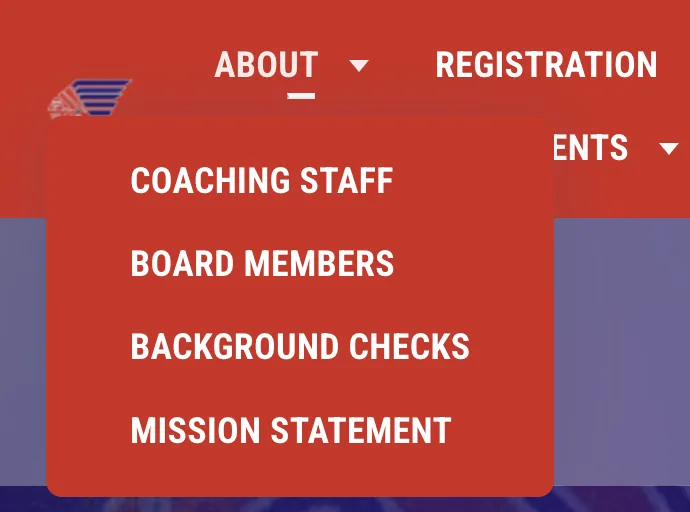
Each page is customized to the organization’s liking. For example, here is the mission statement page. Short and simple, but tells readers what they are all about.

Registration page
Design this page for easy navigation, clearly outlining the steps to register for the league. Include an online registration form, information on registration fees, age groups, and any necessary equipment or requirements.
You should also set up different programs for each team or division - a common example is separating out programs for flag football, tackle, and cheerleading.
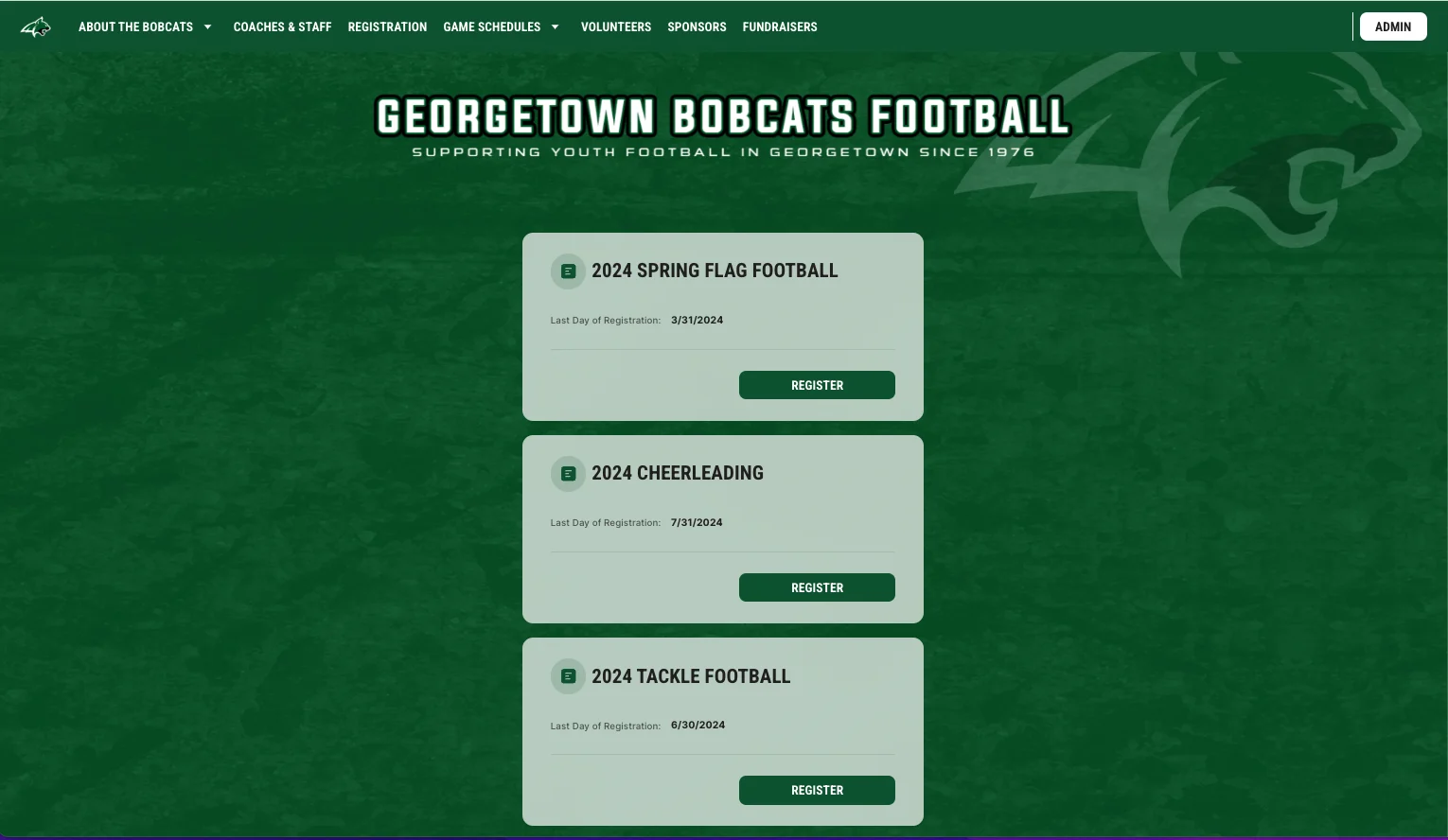
Game schedules
Keep this page regularly updated with the current season's game schedules. Include dates, times, locations, and any relevant information about the teams playing, ensuring it's easily printable for parents' convenience.
Boulder Bears Football puts this information under its 2023 Season tab. You can find all events related to the organization, including games, practices, and camps.
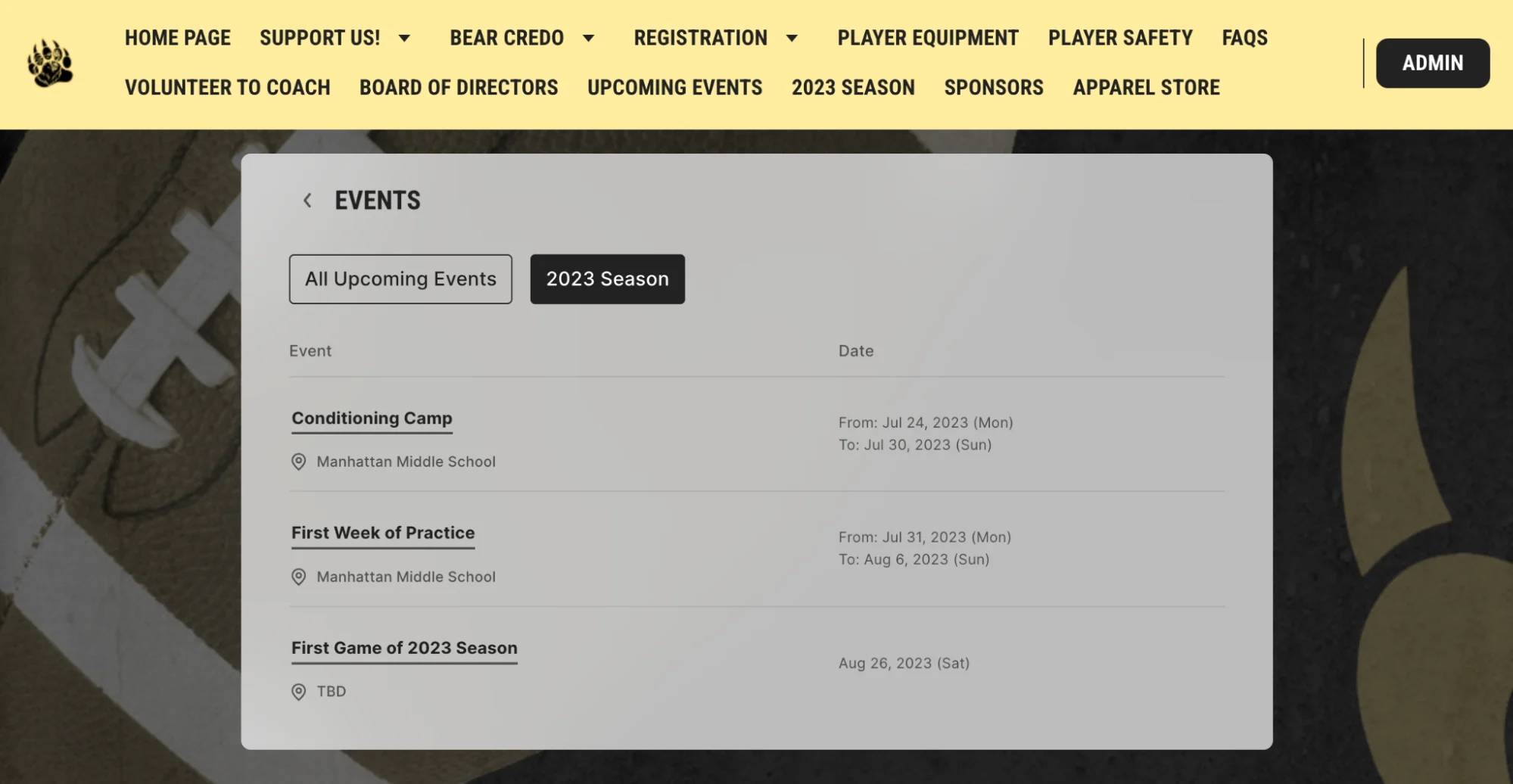
Sponsors
Showcase your sponsors prominently and demonstrate their support for the team or league. Consider providing a brief description of each sponsor, along with their logos, and consider including information on how other businesses can become sponsors.
Boulder Bears Football’s sponsor page is a great example. You can see every brand that sponsors the team and their logo. Plus, you can click directly to the brands website or Facebook profile right from the page.
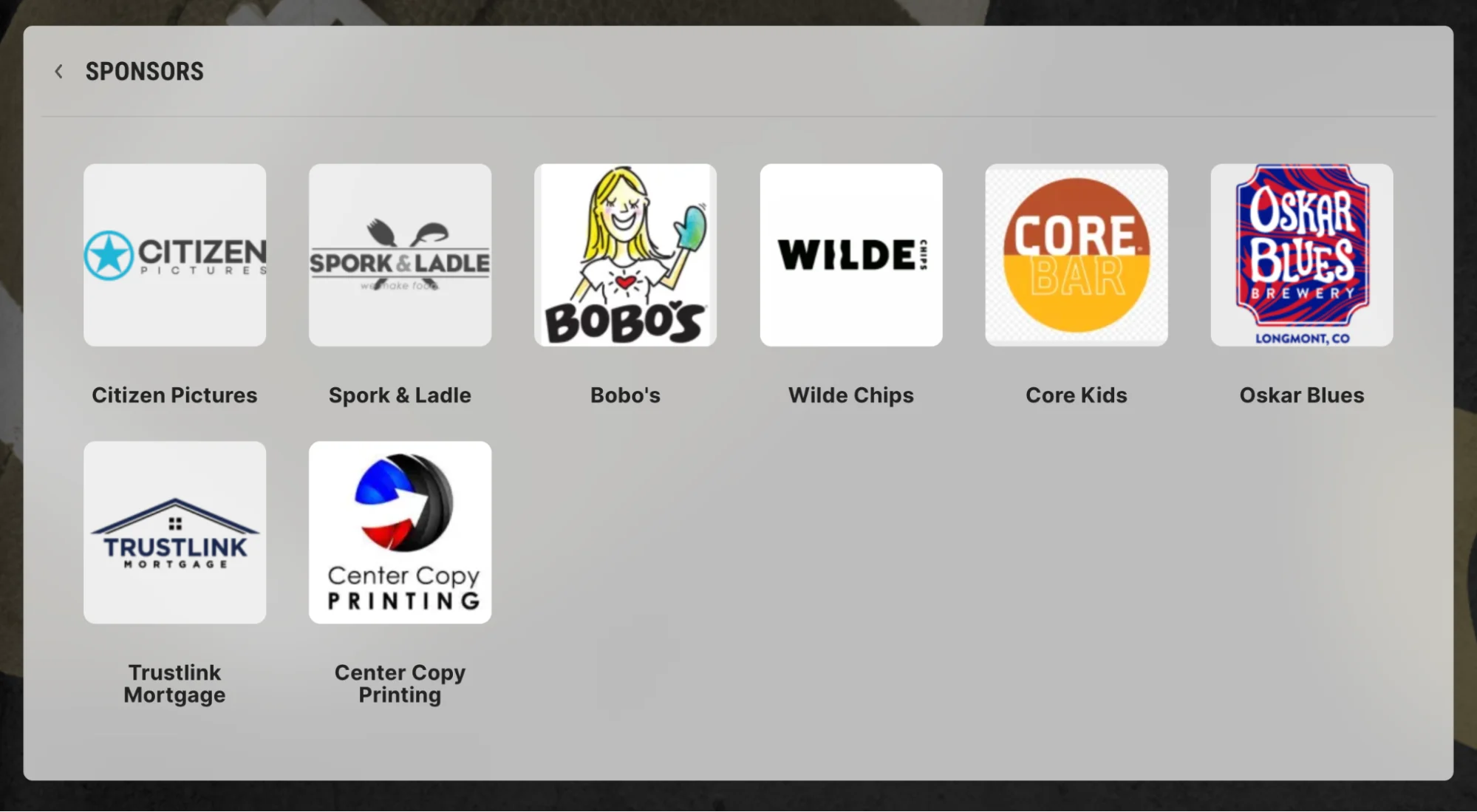
Contact
Offer a simple and straightforward way for visitors to get in touch. Include a contact form, as well as direct contact information such as an email address, phone number, and physical address of the league's office.
Policies and code of conduct
Clearly outline the league's policies, rules, and code of conduct to ensure a safe and positive environment for all participants. This should include behavioral expectations, safety protocols, and disciplinary procedures.
Piqua Youth Football Association has a very detailed and clear Code of Conduct parents and spectators must agree to. You can find the page under its “Parents” tab on the homepage.

6. Create a domain
Creating a domain name for your youth football league not only lends professionalism but also ensures your league is easily discoverable online.
For example, if your team is named "Golden Eagles Youth Football," then choosing a domain like "goldeneaglesyouthfootball.com" makes it straightforward and memorable for everyone involved.
7. Test and launch your new football club website
Now here’s where everything comes together. Gather everyone involved in your planning (coaches, volunteers, parents) and have them test the website.
Make sure all the pages work and the images look good. Review the new website on your phone and desktop to see if it loads fast and works effectively. Once you’re finished, announce the launch of your new football website! Tell everyone on social media, via email, and wherever else you talk with your community.
8. Optimize your website for SEO
Make your website search engine-friendly by identifying keywords relevant to your content. Typical terms for a youth football website include "youth football leagues near me," "junior football league sign-ups," and "[Your City] youth football."
Create a Google My Business profile for your league. This will help you appear in local search results and provide important information like your location and hours.
For example, when you search “youth football piqua ohio”, you’ll find Piqua Youth Football Association pop up first, with a Google profile on the side of the search results.
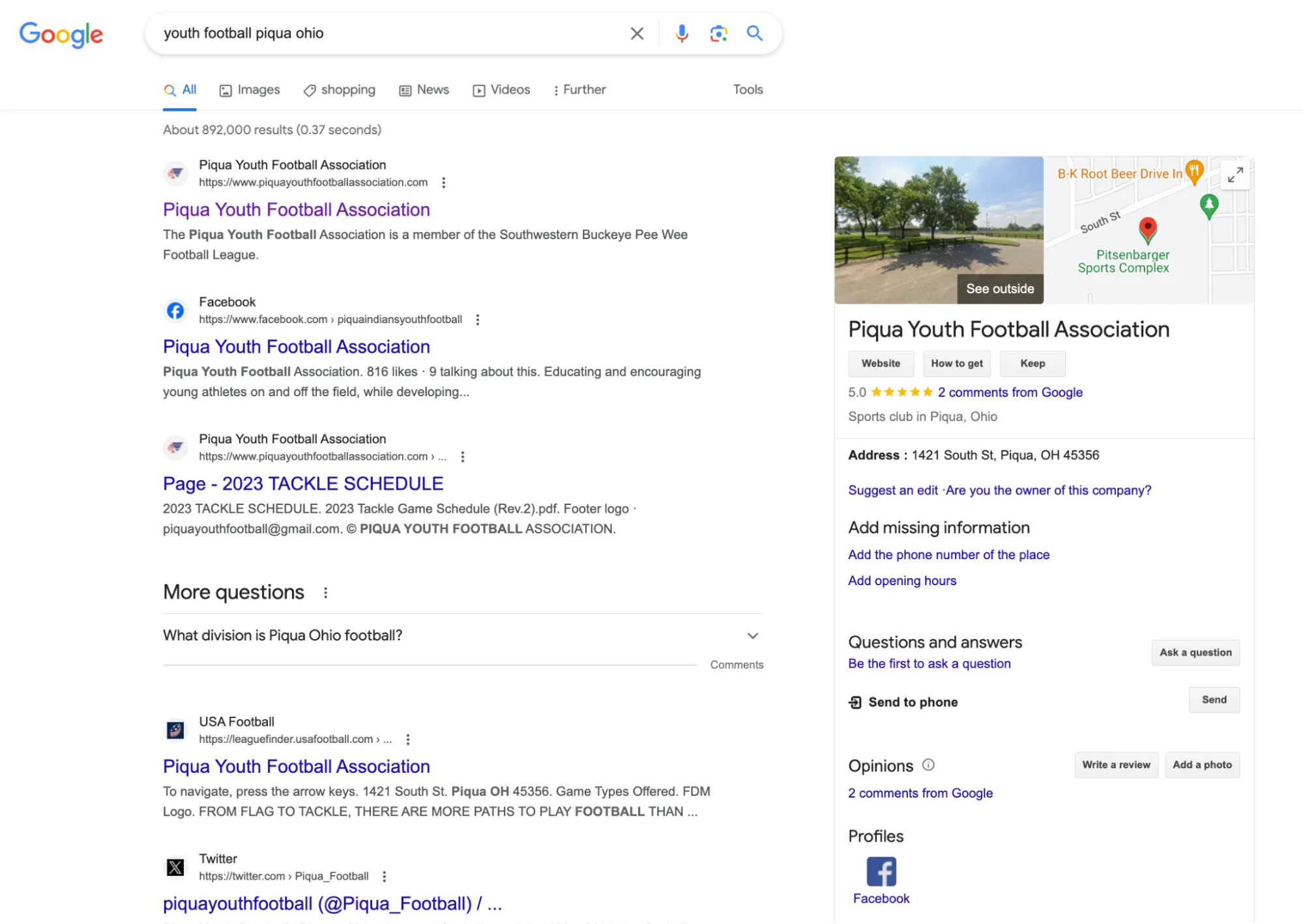
9. Maintain your new football website
Keep your audience informed by regularly updating your website with the latest news, match results, and upcoming events. Establish a routine for updating all sections of your website, such as team rosters and event calendars, on a bi-weekly or monthly basis.
If possible, train other team members or volunteers in basic website maintenance tasks to share the workload.
Build your youth football website with Jersey Watch today
Your website serves as a central hub for players, parents, and coaches within your youth football club. It’s home for helpful information like schedules, results, and even memories of the team.
With Jersey Watch, you can create a football website quickly and easily. Its user-friendly sports website builder allows for easy updates and customization, so your website reflects your team spirit. Our registration and communication tools also help simplify administration tasks, so organizers can focus more on developing young athletes and raising money for the program.